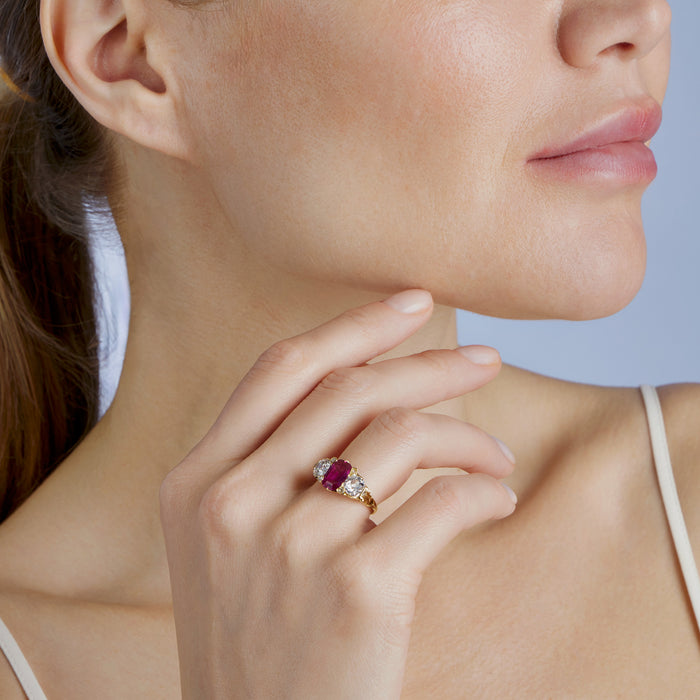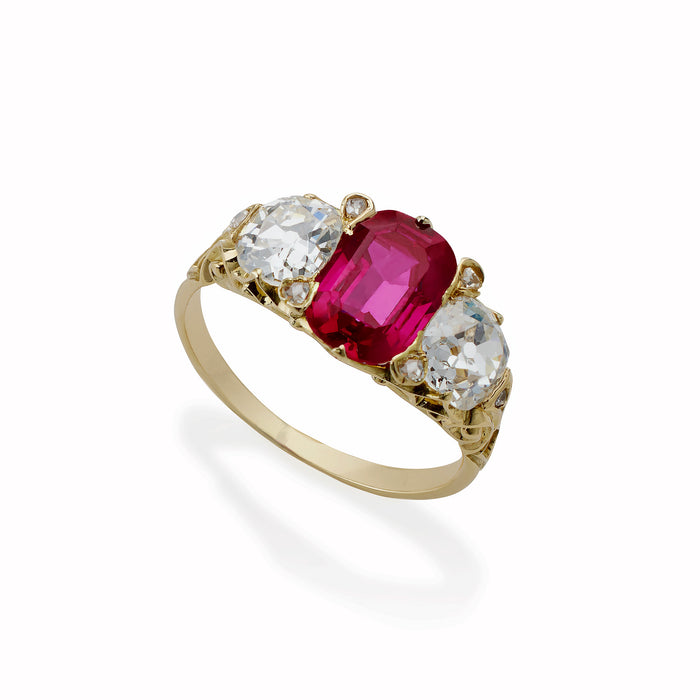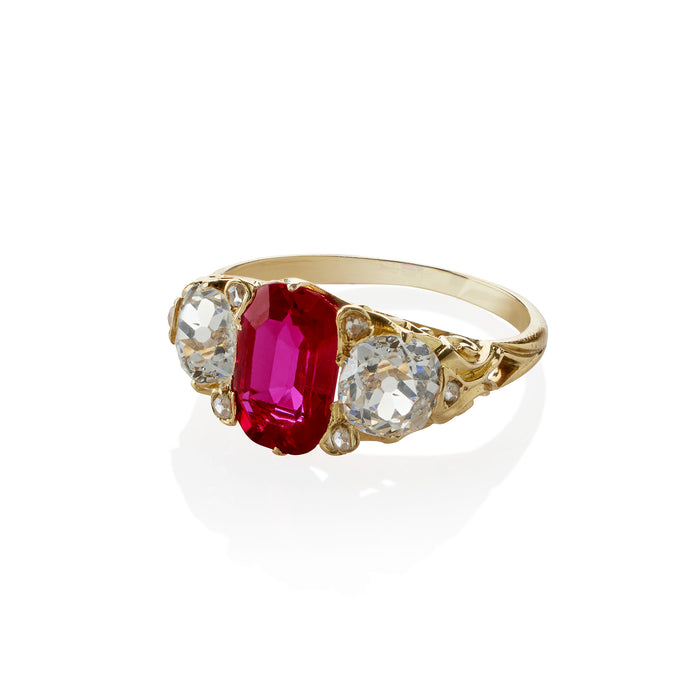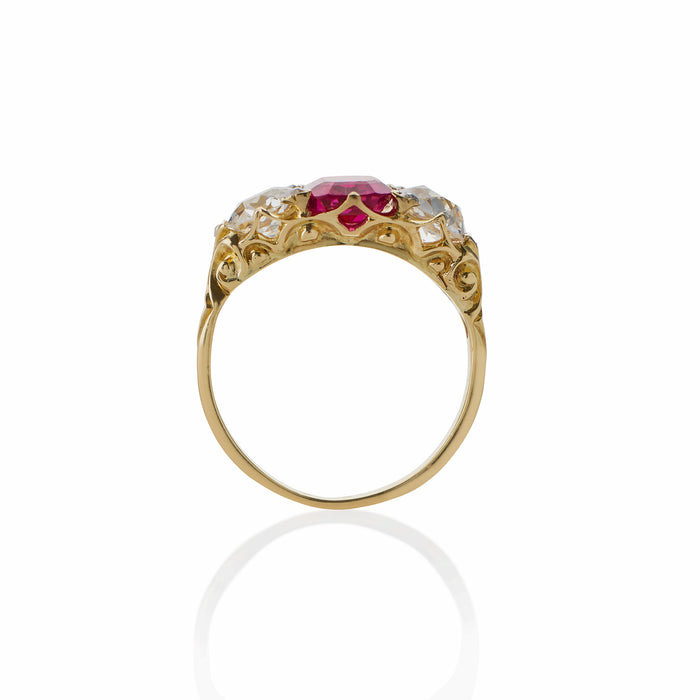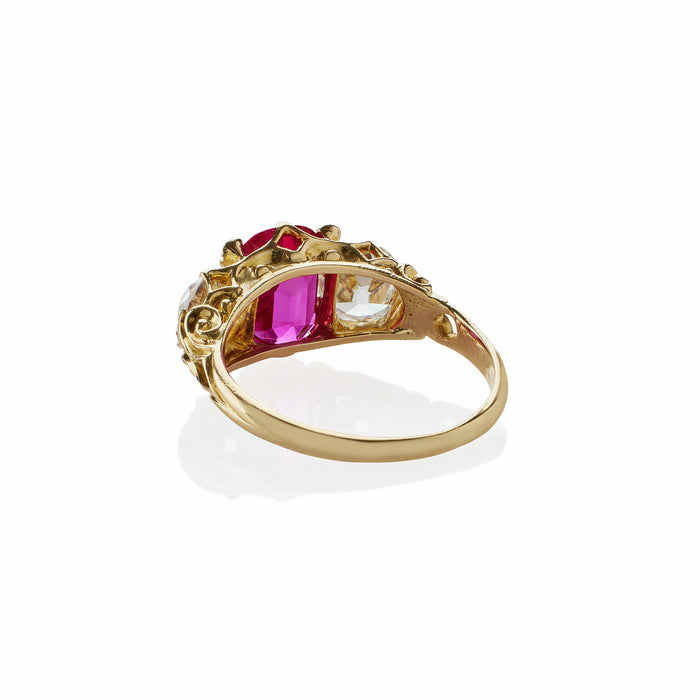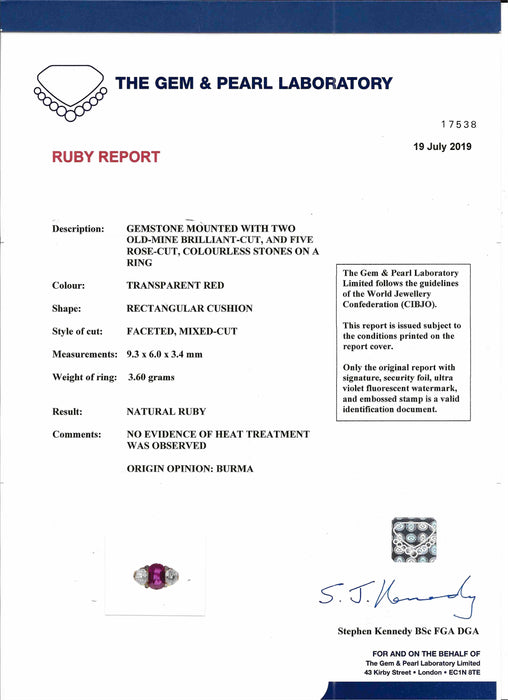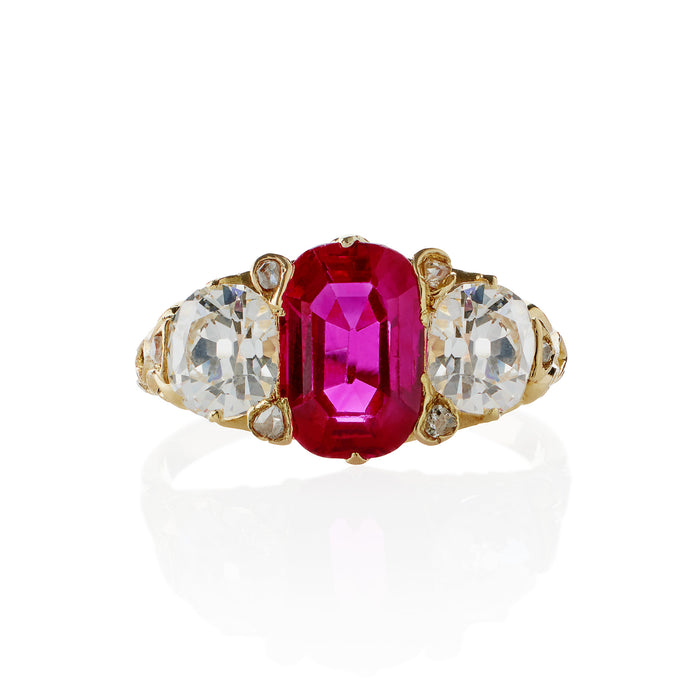
Burmese Natural No Heat Ruby and Old Mine-cut Diamond Ring
$59,500
Mounted in the 1890s, this Burmese ruby is set in 18K gold with antique-cut diamonds. The rectangular step-cut ruby with rounded corners, measuring approximately 9.30 x 6.00 x 3.40 mm, weighing approximately 1.90 carats, is flanked by 2 old mine-cut diamonds, approximate total weight 1.30 carats, with 4 rose-cut diamond accents, all set above a low scrolling open gallery, mounted in 18K gold. An intensely colored and rare old Burmese ruby set between fiery old diamonds, this exquisite little ring blazes and sparkles on the finger.
- Product Details
- Curator's Notes
Item #: R-21126
Circa: 1890s
Size: 5.75 (this ring can be sized; please contact the gallery for further information)
Materials: 1 rectangular step-cut ruby (measuring approximately 9.3 x 6.0 x 3.4mm, weighing approximately 1.90 carats); 2 old mine-cut diamonds (approximate total weight 1.30 carats); 4 rose-cut diamonds (approximate total weight 0.04 carat); 18K Gold
Documentation: Accompanied by a report from The Gem & Pearl Laboratory, London, dated 19 July 2019, stating no evidence of heat treatment, Burmese origin.
Natural, unheated Burmese rubies are among the most scarce gems on earth, for several reasons. The presence of chromium, one of the rarest elements, is essential to the gem's rich red color. Further, free silicon, one of the most common elements in the earth's crust, tends to prevent ruby from forming at all. Further, in the few regions where ruby does form, iron is also often present, and inserts itself in ruby's mineral structure as an impurity, sometimes causing staining, but most importantly absorbing the vivid red fluorescence emitted by chromium. Of all the regions where ruby is present, deposits in Burma are among those where iron is least prevalent and thus Burmese rubies tend to display the coveted red fluorescence that makes for a vivid red. Rubies' scarcity has long been known - those from Burma have been coveted for centuries by elites in Asia and Europe. A tiny fraction of one percent of known rubies, like this one, are natural color, untreated, and of Burmese origin. Given the vigorous exploitation of known deposits over time, the supply is not likely to grow.

